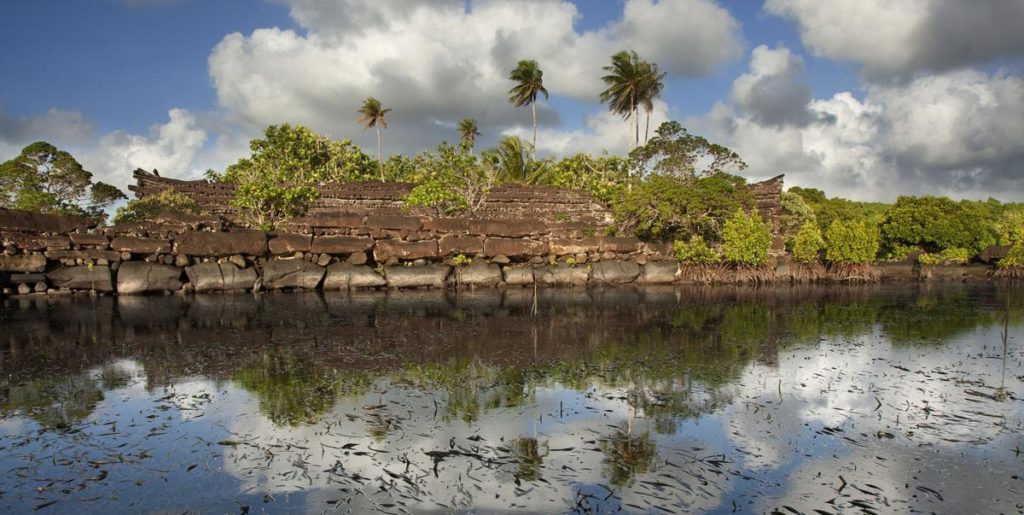Nan Madol is an archaeological site and a national historic landmark located on the remote island of Pohnpei, Federated States of Micronesia. On July 15, 2016 it was inscribed to UNESCO’s World Heritage Committee along with three other sites in China, India, and Iran. It became the first site in Micronesia to be inscribed to the UNESCO’s World Heritage Committee.







Nan Madol was the ceremonial and political seat of the Saudeleur Dynasty, which united Pohnpei’s estimated population of 25,000 people until about 1628.[3] Set apart between the main island of Pohnpei and Temwen Island, it was a scene of human activity as early as the first or second century AD. By the 8th or 9th century, islet construction had started, with construction of the distinctive megalithic architecture beginning 1180–1200 AD.[13]
Little can be verified about the megalithic construction. Pohnpeian tradition claims that the builders of the Leluh archaeological site on Kosrae (likewise composed of huge stone buildings) migrated to Pohnpei, where they used their skills and experience to build the even more impressive Nan Madol complex. Radiocarbon dating indicates that Nan Madol predates Leluh; thus, it is more likely that Nan Madol influenced Leluh.[13]
According to Pohnpeian legend, Nan Madol was constructed by twin sorcerers Olisihpa and Olosohpa from the mythical Western Katau, or Kanamwayso. The brothers arrived in a large canoe seeking a place to build an altar so that they could worship Nahnisohn Sahpw, the god of agriculture. After several false starts, the two brothers successfully built an altar off Temwen Island, where they performed their rituals. In legend, these brothers levitated the huge stones with the aid of a flying dragon. When Olisihpa died of old age, Olosohpa became the first Saudeleur. Olosohpa married a local woman and sired twelve generations, producing sixteen other Saudeleur rulers of the Dipwilap (“Great”) clan.[note 2]
The founders of the dynasty ruled kindly, though their successors placed ever increasing demands on their subjects. Their reign ended with the invasion by Isokelekel, who also resided at Nan Madol, though his successors abandoned the site.[7][14][15] Polish ethnographer and oceanographer John Stanislaw Kubary made the first detailed description of Nan Madol in 1874.[16]